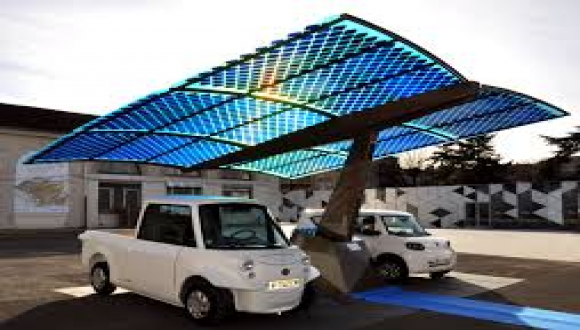Power processing for photovoltaics and energy-saving systems
In the near future, most countries will have to make a transition from fossil fuel-based electricity to generation based on renewable energy sources. This is a widely accepted understanding due to a. the need to reduce carbon emissions and b. the increasing shortage of oil resources.
Sustainable sources, such as photovoltaic generators (PVG), produce raw electricity that requires processing before it can be used (for instance PV modules output is DC and should be transformed into AC to be coupled to the power grid) and Power Electronics is the enabling technology for that. My focus in researching power processing for renewable energy is driven by rather conceptual and topological aspects such as boosting the tracking efficiency of maximum power point tracking (MPPT) systems based on load-side parameter sensing [1], high-speed linear load emulation based MPPT [2], and solving mismatching in PV systems by means of power processing. Mismatching results in various detrimental effects such as multipeaking of the power curve, the occurrence of dissipating load mode and the uncontrolled heating of modules, and, most importantly, power losses, which are disproportionally higher than the shaded area and may reach 50%. Thus, PV technology involves an economic paradox—while endless amounts are spent on research to improve, even by a fraction of a percent, the efficiency of PV cells, between 10% and 50% of the potential energy can be lost due to mismatch losses. This fact drives a trend to decrease the granularity of the PV generator component level at which the power is processed by electronic means. Recently, this idea has resulted in the distributed MPPT (DMPPT) approach, in which maximum power point tracking is performed at the module level by module-integrated dc–dc converters. My research is aimed at more efficient power processing topologies, such as the shuffling topology, in which a dc–dc converter interconnects each pair of adjacent modules, and the returned energy current converter (RECC) topology [3-5]. In these topologies, only small fractions of the total PV system's power are processed by the auxiliary converters, facilitating higher efficiencies and potentially reduced cost relative to DMPPT.
In my view, energy saving is just another form of renewable energy. Thus, new energy-saving methods (typically on the load side), such as load scheduling and motor efficiency controllers, have the potential to contribute to reductions in fossil fuel use. For instance, we have developed a motor efficiency controller that, based on the identification of a motor's operating conditions, synthesizes the optimized voltage signals input to the motor (with no harmonics generated whatsoever) [6]. Subsequent experimental results showed a 5% to 15% reduction in real power consumption and up to a 50% reduction in the reactive power consumption, depending on motor type and operating conditions.






